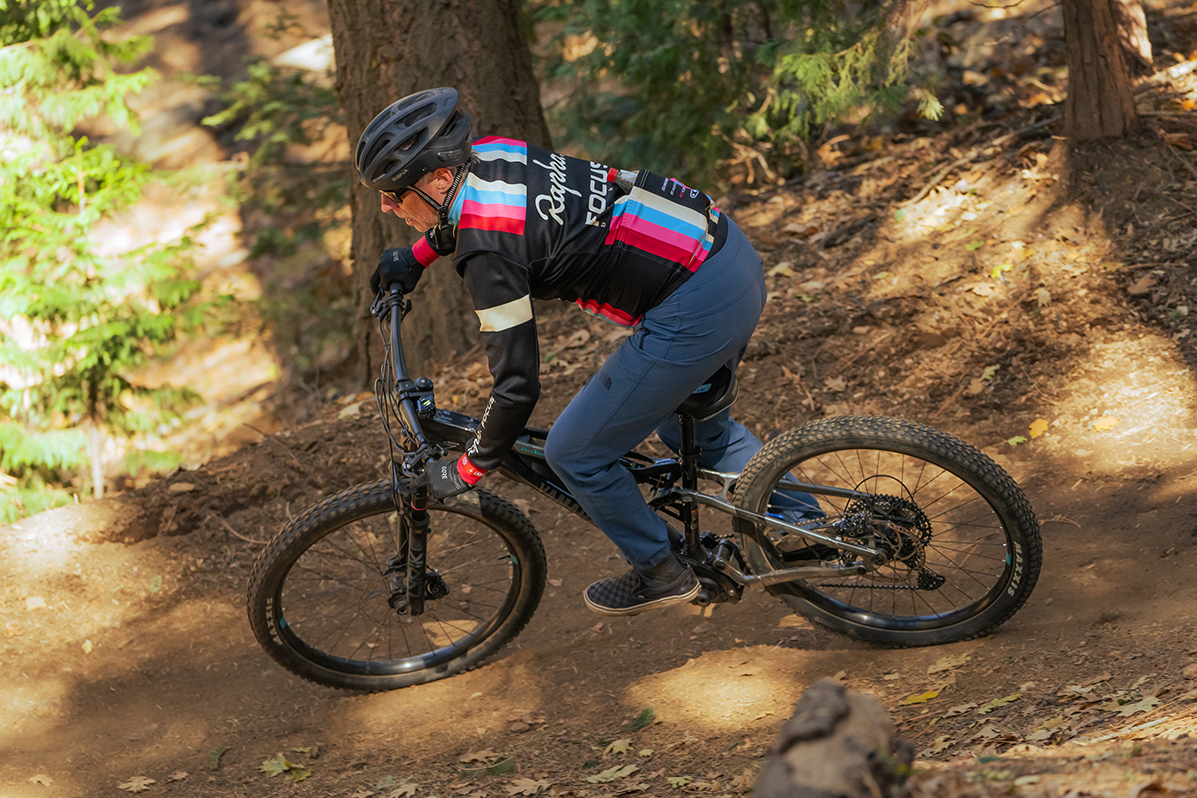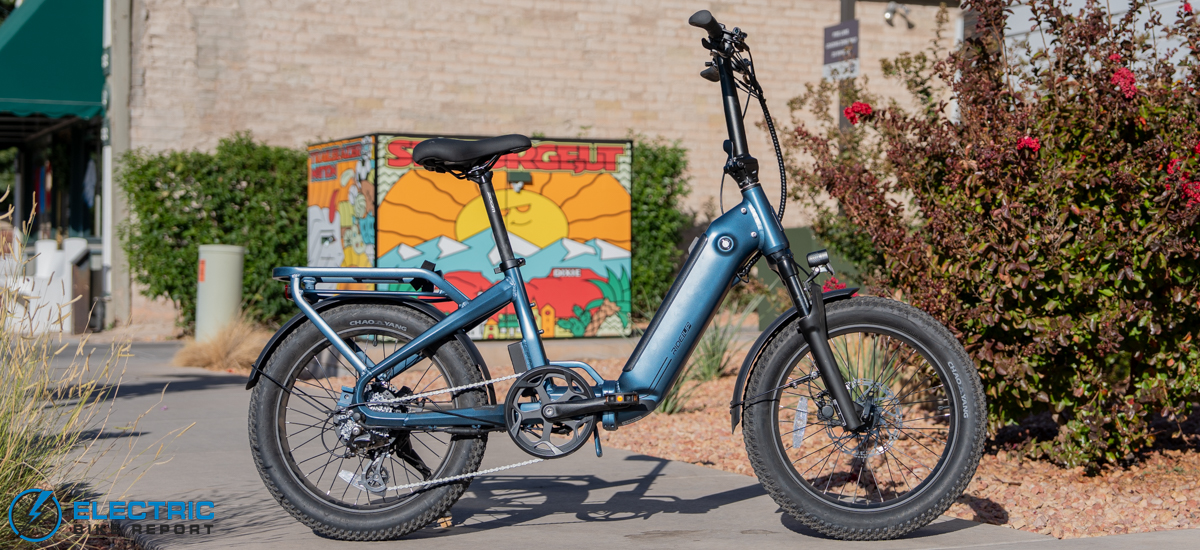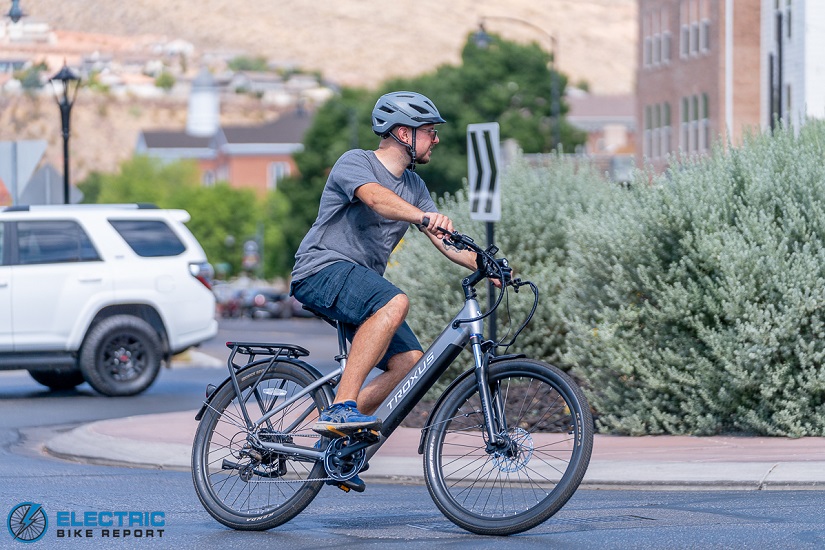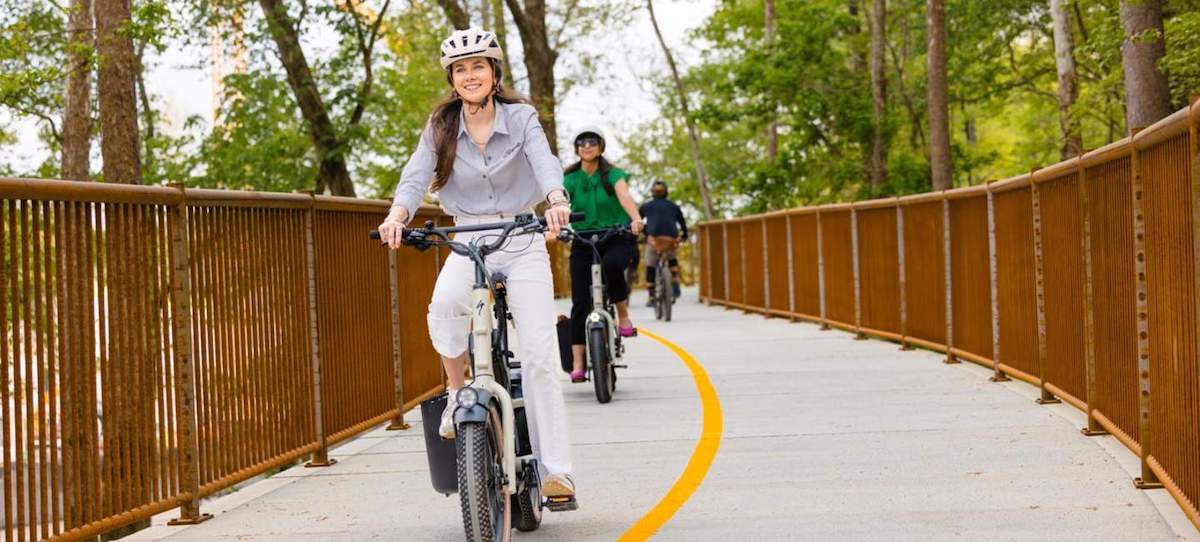A compact folding e-bike that has range for days and the upgrades fans had been asking for.
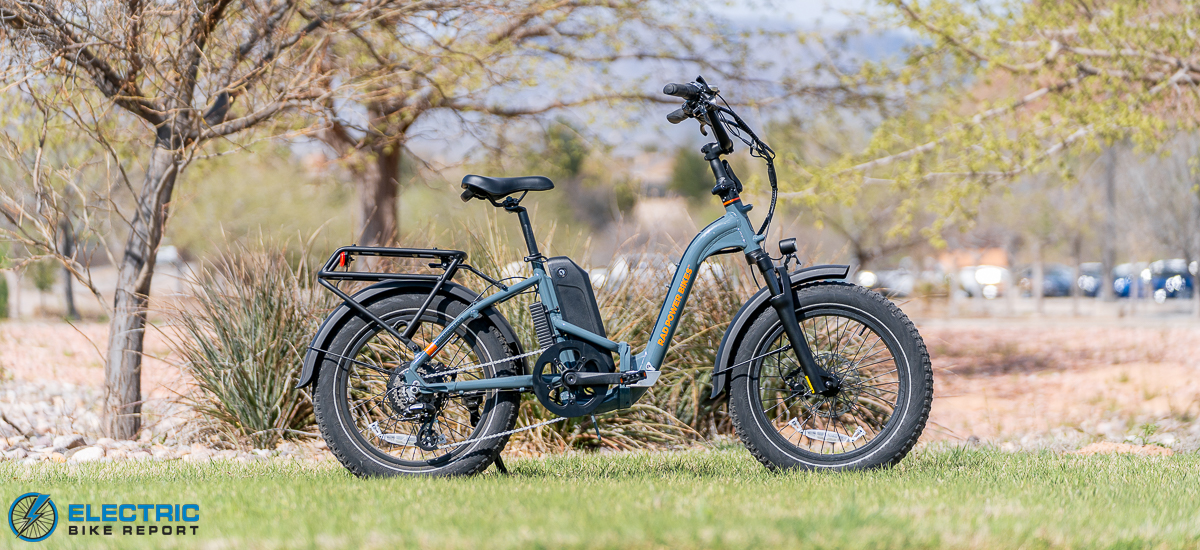
Folding up to just 29″H x 25″W x 41″L, this bike packs up small in just a few steps. With its folding design, the RadExpand 5 Plus is a go-to consideration for the on-the-go crowd like RVers, or just those with limited storage space.
Not only is the RadExpand 5 Plus here UL 2271 and UL 2849 Certified, but they now have Smart Shield Battery Technology. This new technology is another step forward in fire safety tech in e-bikes borrowed from existing setups electric vehicles. Each individual battery cell is “shielded” in a fire-resistant barrier, helping to prevent run-offs should one cell get too hot.
New for the RadExpand this time around is going from a cadence sensor to a torque sensor motor activation of the 750W motor. This new torque sensor has a more natural feel when pedaling and as you will see in the Range Test, gave us much better mileage than we expected.
In this Rad Power Bikes RadExpand 5 Plus review, well talk speeds, real-world range results, brake performance testing and the overall ride quality. So, helmets on, water bottles full and let’s take a ride and chat about the RadExapand 5 Plus!
[Read more…] about Rad Power Bikes RadExpand 5 Plus Review | Nice Tech & Ride
